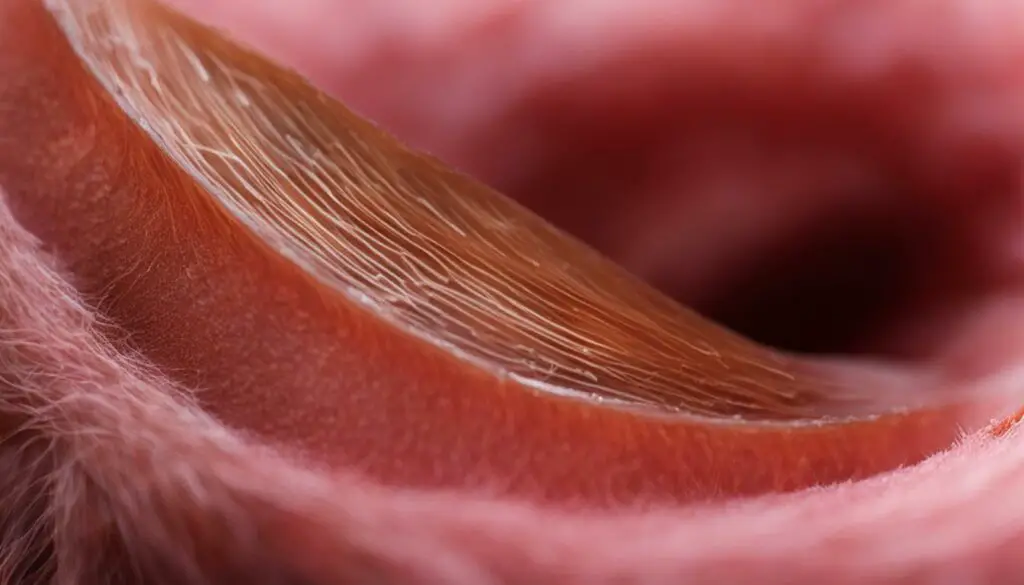As a cat owner, I understand how important it is to keep our feline friends happy and healthy. One common issue that can cause concern is the presence of brown stuff in their ears. While it may seem alarming, rest assured that it doesn’t necessarily mean your cat has ear mites. In this article, I’ll explore the various ear problems that cats can experience, the symptoms to look out for, and the steps you can take to ensure your cat’s ear health is in top condition.
When it comes to our furry companions, their ears can be quite sensitive and prone to problems. It’s essential to be aware of any signs that indicate an issue and not ignore them. Excessive scratching, sensitivity to touch, head tilting, frequent head shaking, redness or swelling of the outer ear, foul odor, ear discharge (black, brown, or yellow in color), excessive brown ear wax, hearing loss, ear bleeding, and behavioral changes are all common symptoms of ear problems in cats.
While ear mites are a well-known cause of ear issues in cats, they are not the only culprits. Other common problems include outer ear canal infections, ear polyps, dermatophytosis (ringworm), and allergies. It’s crucial to seek veterinary consultation to accurately diagnose the underlying cause of your cat’s ear problems and provide appropriate treatment.
Key Takeaways:
- Brown stuff in a cat’s ears doesn’t necessarily mean ear mites are the cause.
- Common symptoms of ear issues in cats include excessive scratching, head shaking, and ear discharge.
- Cat ear problems can be caused by ear mites, outer ear canal infections, ear polyps, dermatophytosis, or allergies.
- Veterinary consultation is essential for accurate diagnosis and treatment of ear problems in cats.
- Proper ear cleaning and regular monitoring are crucial for maintaining good ear health in cats.
Symptoms of Ear Issues in Cats
Cats may experience a range of symptoms when they have ear issues. These symptoms serve as important indicators that something is wrong and should prompt a visit to the veterinarian. Some common symptoms of ear problems in cats include:
- Excessive scratching and pawing at the ears: If you notice your cat constantly scratching or pawing at their ears, it could be a sign of an underlying problem.
- Sensitivity to touch: Cats with ear issues may react negatively when their ears are touched, indicating pain or discomfort.
- Head tilting: If your cat is tilting their head to one side, it could be a sign of an ear problem affecting their balance.
- Frequent head shaking: Cats with ear issues may shake their heads frequently in an attempt to relieve itching or discomfort.
- Disorientation and balance problems: Ear problems can affect a cat’s balance and coordination, resulting in disorientation or stumbling.
- Redness or swelling of the outer ear: Inflammation or infection in the outer ear can cause redness and swelling.
- Foul odor: A foul smell coming from your cat’s ears can indicate an infection or other problem.
- Ear discharge: Unusual discharge from the ears, such as black, brown, or yellow fluid, can be a sign of an ear problem.
- Excessive brown ear wax: A buildup of brown ear wax can indicate an underlying issue.
- Partial or complete hearing loss: Cats with ear problems may experience a decrease in their ability to hear.
- Ear bleeding: While not as common, ear bleeding can occur in severe cases of ear issues.
- Behavioral changes: Cats may exhibit changes in behavior, such as depression or irritability, when they have ear problems.
Symptoms of Ear Issues in Cats
If you notice any of these symptoms in your cat, it is important to seek veterinary consultation. A veterinarian can accurately diagnose the underlying cause of the problem and recommend appropriate treatment. Prompt intervention can help alleviate your cat’s discomfort and prevent any potential complications.
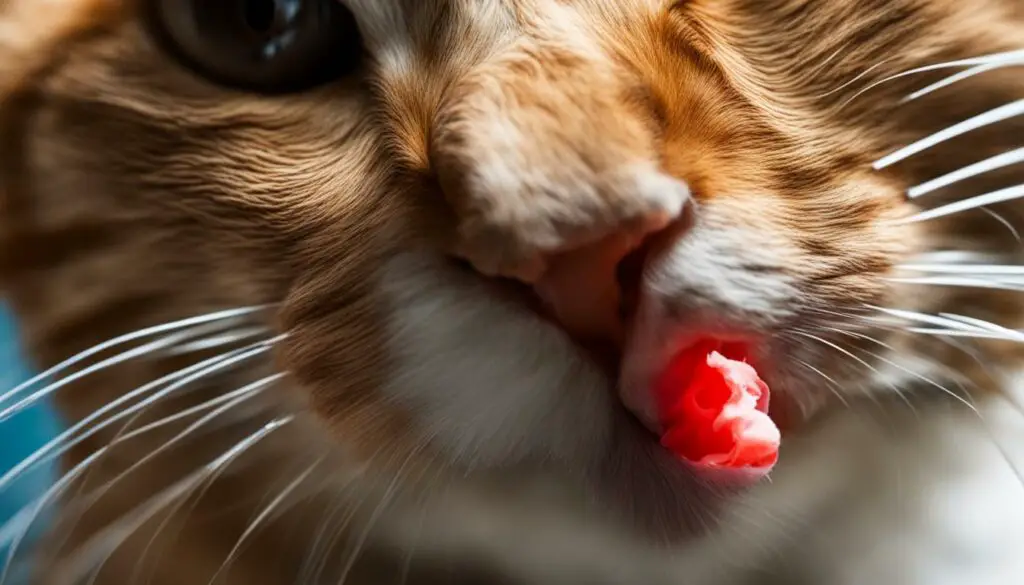
Symptoms of Ear Issues in Cats
| Symptom | Description |
|---|---|
| Excessive scratching and pawing at the ears | Indicates irritation or discomfort in the ears. |
| Sensitivity to touch | Reacting negatively when the ears are touched, suggesting pain or discomfort. |
| Head tilting | A sign of an ear problem affecting balance. |
| Frequent head shaking | Attempts to relieve itching or discomfort. |
| Disorientation and balance problems | Caused by ear issues affecting coordination. |
| Redness or swelling of the outer ear | Inflammation or infection in the outer ear. |
| Foul odor | Signifies an infection or other problem. |
| Ear discharge | Unusual fluid discharge from the ears. |
| Excessive brown ear wax | Buildup of brown ear wax. |
| Partial or complete hearing loss | Decreased ability to hear as a result of ear problems. |
| Ear bleeding | Rare but can occur in severe cases. |
| Behavioral changes | Depression or irritability due to ear problems. |
If you suspect your cat may be experiencing any of these symptoms, it is best to consult with a veterinarian for proper diagnosis and treatment.
Common Cat Ear Problems
Cats can experience a variety of ear problems that can affect their overall health and well-being. Understanding these common ear problems is crucial in providing the appropriate care and treatment for your feline friend. Here are some of the most prevalent cat ear problems:
- Ear Mites: These tiny parasites are a common cause of ear problems in cats, especially in young kittens and outdoor cats. Ear mites can cause itching, scratching, and a dark brown to black ear discharge resembling coffee grounds.
- Outer Ear Canal Infections: Bacterial or fungal infections can lead to outer ear canal infections. These infections can cause redness, swelling, and discharge in the ears.
- Ear Polyps: Inflammatory masses known as ear polyps can develop in cats’ ears, often associated with recurrent or unresolved ear infections.
- Dermatophytosis (Ringworm): Although not commonly affecting the ear canal, ringworm can occur on the ear flaps, particularly in young kittens.
- Allergies: Cats can develop allergies that can lead to ear problems, including itchiness and inflammation in the ears.
Each of these ear problems requires proper diagnosis and treatment by a veterinarian. It’s important to seek veterinary consultation if you notice any symptoms of ear problems in your cat, such as excessive scratching, head shaking, or discharge from the ears. Early detection and treatment can help prevent complications and ensure the well-being of your furry companion.
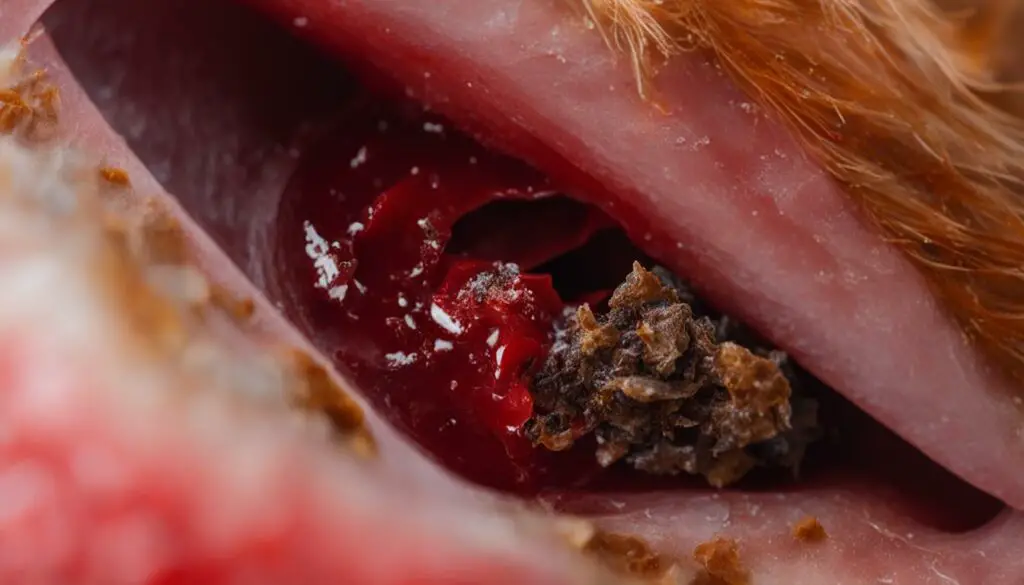
Table: Comparison of Common Cat Ear Problems
| Ear Problem | Symptoms | Treatment |
|---|---|---|
| Ear Mites | Head shaking, scratching, dark brown to black discharge | Medicated ear drops or topical treatments |
| Outer Ear Canal Infections | Redness, swelling, discharge | Antibiotics or antifungal medications |
| Ear Polyps | Recurrent infections, inflammation | Surgical removal of polyps and treatment of underlying infection |
| Dermatophytosis (Ringworm) | Lesions on ear flaps | Antifungal medications |
| Allergies | Itchiness, inflammation | Allergy management, topical treatments, or medications |
Ear Mites in Cats
Ear mites are a common problem that can affect cats, especially young kittens and those that spend time outdoors. These tiny parasites can easily be transmitted from one cat to another and can cause a range of uncomfortable symptoms. If you notice your cat excessively shaking their head, scratching around the ears, or experiencing a dry dark brown to black ear discharge resembling coffee grounds, they may have ear mites.
It is important to seek veterinary consultation to confirm the presence of ear mites and provide appropriate treatment. The veterinarian will conduct a thorough examination of your cat’s ears and may use a special tool to visualize the mites. Treatment options may include medicated ear drops or topical solutions that effectively eliminate the mites and alleviate the associated symptoms.
| Signs of Ear Mites in Cats | Treatment |
|---|---|
|
|
Preventing the recurrence of ear mites is essential to ensure the long-term ear health of your cat. Regular cleaning of your cat’s ears and keeping them free from excessive wax build-up can help reduce the risk of mite infestation. Additionally, minimizing your cat’s exposure to other cats that may have ear mites and maintaining good overall hygiene can help prevent the spread of these parasites.
Outer Ear Canal Infections in Cats
Outer ear canal infections are a commonly encountered ear problem in cats. These infections can be caused by bacterial or fungal organisms and typically result in symptoms such as redness or swelling of the ears, foul odor, and ear discharge. Proper diagnosis and treatment are essential to prevent further complications and promote the healing process.
Causes of Outer Ear Canal Infections
In cats, outer ear canal infections can be caused by various factors, including bacteria and fungi. Bacterial infections are often secondary to underlying issues such as allergies or ear mites, while fungal infections can occur due to exposure to environmental molds or yeasts. Additionally, excessive moisture in the ear can create a favorable environment for the growth of these microorganisms.
Diagnosis and Treatment
When a cat presents with symptoms of an outer ear canal infection, a veterinary examination is necessary to confirm the diagnosis. The veterinarian may collect a sample of ear discharge for analysis and perform an otoscopic examination to visualize the ear canal and any abnormalities present. Treatment options typically include topical ear medications, such as antimicrobial or antifungal drops, to combat the infection. In severe cases, oral medications may also be prescribed.
It is important to follow the veterinarian’s instructions regarding treatment duration and frequency of medication administration. In some cases, the cat may require multiple follow-up visits to monitor the progress of the infection and adjust the treatment plan if necessary. It is crucial to complete the full course of treatment to ensure the complete resolution of the infection and prevent recurrence.
| Signs of Outer Ear Canal Infections in Cats | Treatment |
|---|---|
| – Redness or swelling of the ears | – Topical ear medications (antimicrobial or antifungal) |
| – Foul odor | – Oral medications (in severe cases) |
| – Ear discharge | – Follow-up visits for monitoring |
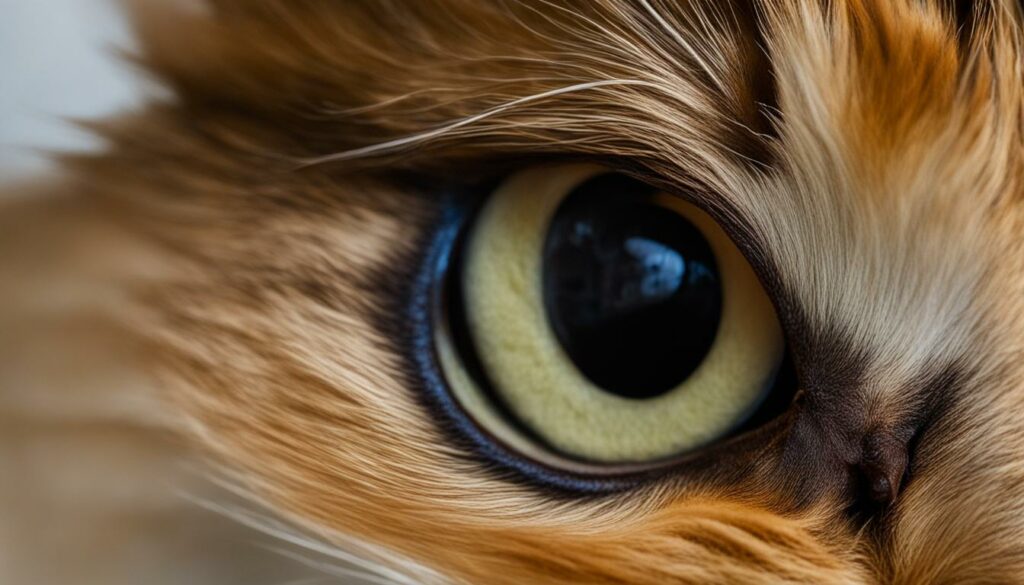
“Outer ear canal infections can cause discomfort and pain for cats. Seeking veterinary care is vital to ensure a proper diagnosis and effective treatment plan. With prompt attention and appropriate medication, cats can recover from these infections and experience relief from their symptoms.”
Ear Polyps in Cats
Ear polyps are inflammatory masses that can develop in the ears of cats. They are usually less concerning than tumors or cancer and are often associated with recurrent or unresolved ear infections. Veterinary examination, including video-otoscopic procedures, is necessary to diagnose and remove these masses, as well as identify and treat any underlying infection.
Some common signs of ear polyps in cats include:
- Head shaking
- Tilting of the head
- Scratching or pawing at the ears
- Hearing loss
Ear polyps can cause discomfort and affect your cat’s quality of life. It is important to seek veterinary care if you notice any symptoms or suspect the presence of ear polyps. A veterinarian will conduct a thorough examination of your cat’s ears and may recommend further diagnostic tests to confirm the diagnosis.
| Symptoms | Treatment |
|---|---|
| Head shaking | Removal of the polyps through surgery |
| Tilting of the head | Antibiotics to treat any underlying infections |
| Scratching or pawing at the ears | Pain management medication |
| Hearing loss | Follow-up care and monitoring |
Early detection and treatment of ear polyps can help prevent complications and improve your cat’s well-being. It is essential to follow your veterinarian’s recommendations for post-treatment care and schedule regular check-ups to monitor your cat’s ear health. With proper care and attention, your feline companion can enjoy a happy and comfortable life free from ear polyps.

Dermatophytosis (Ringworm) in Cats
Ringworm is a common fungal infection that can affect cats, usually affecting the skin and hairs. While it does not commonly occur in the ear canal, it can manifest on the ear flaps, especially in young kittens. It is important to be aware of the symptoms and seek veterinary consultation for accurate diagnosis and treatment.
Symptoms of ringworm in cats may include circular patches of hair loss, redness, and scaling. These patches may appear on the ear flaps, face, neck, or other parts of the body. It is important to note that ringworm can be transmitted to humans, so proper precautions should be taken when handling an infected cat.
Diagnosis of ringworm in cats usually involves a combination of visual examination, fungal culture, and microscopic examination of hair and skin samples. Once diagnosed, treatment typically involves antifungal medications, both topical and oral, depending on the severity of the infection. It is important to follow the veterinarian’s instructions for treatment duration and to complete the full course of medication to ensure complete eradication of the infection.
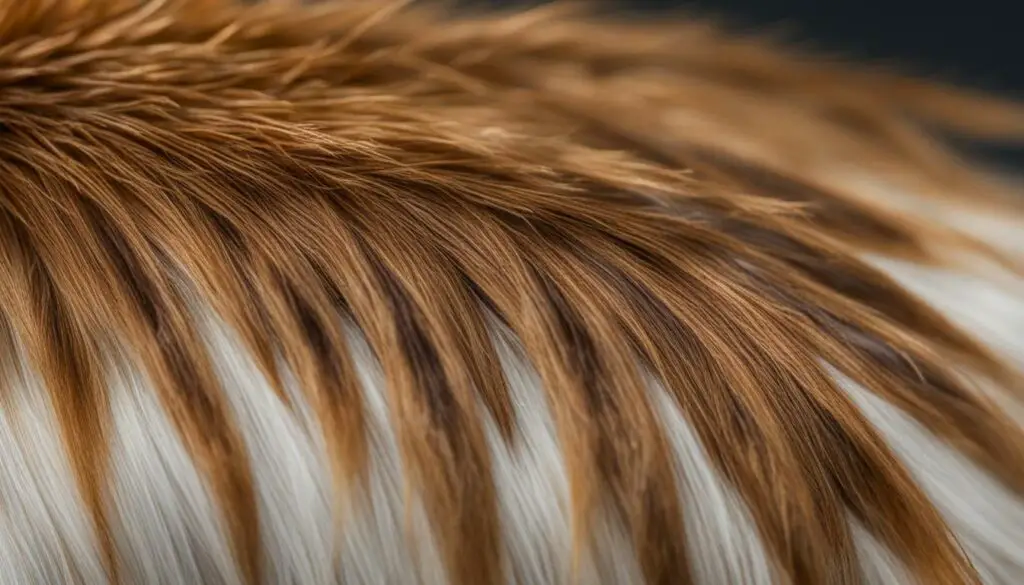
In summary, while ringworm in cats may not commonly affect the ears, it is still important to be aware of this fungal infection and its symptoms. Seeking veterinary consultation for accurate diagnosis and appropriate treatment is crucial. By taking proactive measures and following the veterinarian’s guidance, you can help your cat recover from ringworm and prevent its spread to other pets and humans in your household.
Allergies in Cats
Cats, just like humans, can develop allergies that can affect their overall health, including their ears. Allergies in cats can cause itchiness and inflammation in the ears, leading to discomfort and potential complications if left untreated. It is important for cat owners to be aware of the signs of allergies and seek veterinary consultation for proper diagnosis and treatment.
Common allergens that can trigger allergic reactions in cats include food allergens, such as certain proteins or ingredients in their diet, and environmental allergens, such as pollen, dust mites, or mold. Cats with allergies may exhibit symptoms such as excessive scratching of the ears, head shaking, redness or swelling of the ears, and ear discharge.
Veterinary consultation is necessary to determine the specific allergens causing the allergic reaction in cats. Through a detailed examination and possibly allergy testing, veterinarians can identify the triggers and provide appropriate treatment options. Treatment for allergies may include avoidance of the allergens, dietary changes, medication to control symptoms, or immunotherapy to desensitize the cat’s immune system to the allergens over time.
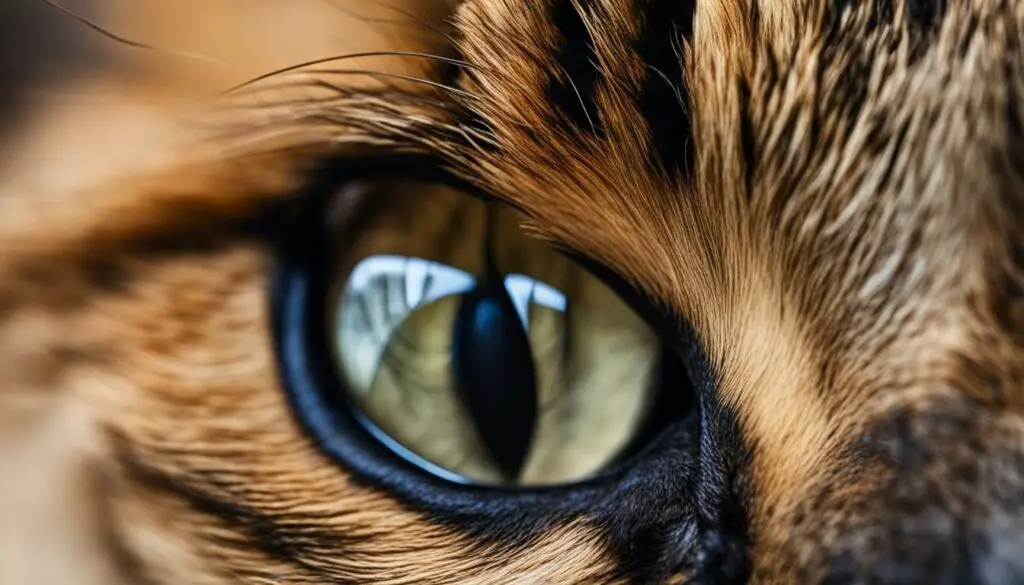
Common Symptoms of Allergies in Cats:
- Excessive scratching of the ears
- Head shaking
- Redness or swelling of the ears
- Ear discharge
Treatment Options for Cat Allergies:
When it comes to treating cat allergies, the specific treatment plan will depend on the underlying cause and severity of the allergic reaction. Some common treatment options include:
| Treatment Option | Description |
|---|---|
| Elimination Diet | Changing the cat’s diet to eliminate potential food allergens and identifying the specific ingredients that trigger the allergic reaction. |
| Medication | Prescribing antihistamines, corticosteroids, or other medications to manage the symptoms of allergies and reduce inflammation. |
| Allergy Shots | Administering immunotherapy injections to gradually desensitize the cat’s immune system to the specific allergens, reducing the severity of the allergic reaction over time. |
“Identifying and addressing the underlying cause of allergies is crucial for providing relief for your cat and improving their overall quality of life.” – Dr. Smith, Veterinarian
Managing allergies in cats requires a combination of veterinary guidance and ongoing care at home. It is important to follow the treatment plan recommended by the veterinarian and provide a safe environment for the cat, minimizing exposure to known allergens. Regular monitoring of the cat’s symptoms and follow-up consultations with the veterinarian will ensure that the allergies are being effectively managed and the cat’s ear health improves over time.
Seeking Veterinary Consultation for Cat Ear Problems
If your cat shows any symptoms of ear problems or experiences recurrent ear issues, it is important to seek veterinary consultation. A veterinarian can accurately diagnose the underlying cause of the problems, provide appropriate treatment, and help improve the overall ear health of your cat.
When it comes to cat ear health, early detection is key. By seeking veterinary consultation at the first sign of symptoms, you can prevent complications and ensure prompt treatment. A veterinarian will perform a thorough examination of your cat’s ears and may recommend additional tests such as ear swabs or microscopic evaluation of ear discharge. This will help in determining the exact cause of the problem and tailoring the treatment accordingly. (cat ear health)
Veterinary consultation is particularly important for cat ear problems that require specialized treatment, such as ear polyps or fungal infections. These conditions often require specific medications or procedures that can only be provided by a veterinarian. Trying to treat these problems at home without professional guidance can lead to ineffective treatment or even exacerbate the condition.
Regular check-ups with a veterinarian are also important for ongoing ear health maintenance for your cat. During these check-ups, the veterinarian can assess the overall condition of your cat’s ears, clean them if necessary, and address any concerns or potential issues. Additionally, they can provide guidance on proper at-home ear care to ensure long-term ear health for your feline companion.
Remember, your cat’s ears are delicate and important for their overall well-being. By seeking veterinary consultation and following their guidance, you can ensure that your cat’s ears stay healthy and free from infections.
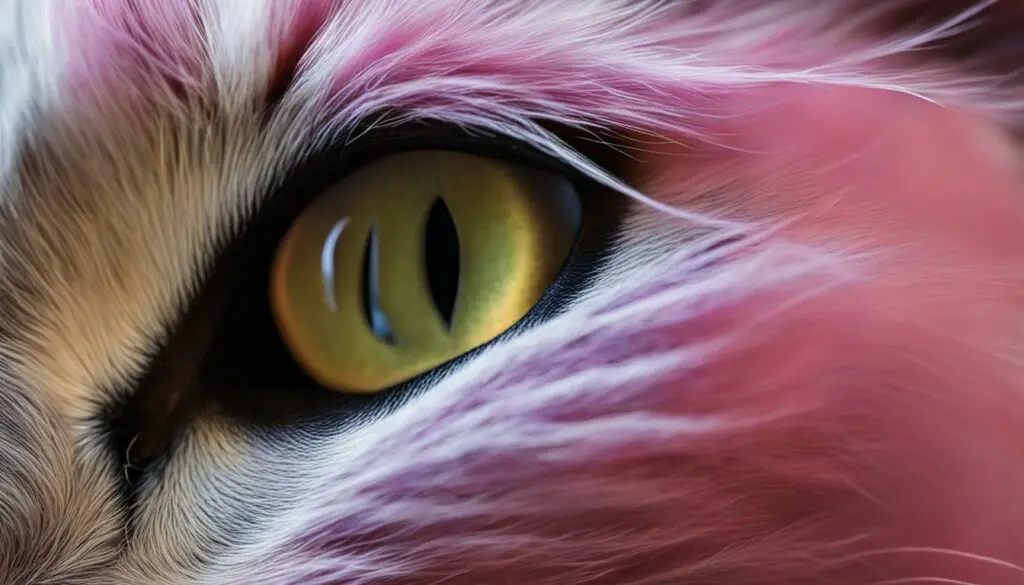
Proper Ear Cleaning for Cats
Proper ear cleaning is an important aspect of maintaining good ear health in cats. Regular cleaning can help prevent excessive wax buildup, remove debris, and provide an opportunity to check for any abnormalities. To clean your cat’s ears, follow these simple steps:
- Gently hold your cat’s head and secure them in a comfortable position.
- Using a pet-safe ear cleaning solution recommended by your veterinarian, apply a few drops into the ear canal.
- Gently massage the base of the ear to distribute the solution and loosen any debris.
- Allow your cat to shake their head, which will help remove the loosened debris.
- Using a clean, soft cloth or cotton ball, carefully wipe away any visible debris from the outer ear.
- Repeat the process for the other ear, if necessary.
It’s crucial to note that excessive cleaning or using improper cleaning techniques can cause harm to your cat’s ears. Avoid using cotton swabs or inserting any objects into the ear canal, as this can lead to injury. If you’re unsure about the proper cleaning technique or if your cat has a history of ear problems, consult your veterinarian for guidance.
Key Points for Safe and Effective Ear Cleaning:
- Use a pet-safe ear cleaning solution recommended by your veterinarian.
- Gently massage the base of the ear to distribute the cleaning solution.
- Avoid using cotton swabs or inserting any objects into the ear canal.
- If your cat resists or shows signs of discomfort during the cleaning process, stop immediately and consult your veterinarian.
| Importance of Proper Ear Cleaning | Benefits of Regular Ear Cleaning |
|---|---|
| Prevents excessive wax buildup | Reduces the risk of ear infections |
| Helps remove debris and dirt | Allows for early detection of any abnormalities |
| Improves overall ear health | Promotes comfort and wellbeing |
Remember, proper ear cleaning is an essential part of your cat’s grooming routine. By following the correct techniques and seeking veterinary guidance, you can help ensure your cat’s ears stay clean and healthy.

Preventing Cat Ear Infections
Ensuring the ear health of your feline companion is crucial for their overall well-being. By taking some preventive measures, you can minimize the risk of cat ear infections and keep your furry friend happy and comfortable. Here are some important steps you can take to prevent cat ear infections:
Regular Ear Cleaning:
Cleaning your cat’s ears on a regular basis helps remove dirt, debris, and excess wax, preventing the buildup of harmful bacteria or fungi. Use a veterinarian-recommended ear cleaning solution and gently wipe the outer part of the ear with a cotton ball or a clean cloth. Be sure to avoid inserting anything into the ear canal, as it can cause damage.
Minimize Exposure to Allergens:
Allergens such as pollen, dust mites, and certain foods can trigger allergies and contribute to ear problems in cats. Try to identify and minimize your cat’s exposure to these allergens. Keep the environment clean, ensure proper ventilation, and provide a balanced diet that suits your cat’s specific needs.
Regular Veterinary Check-ups:
Scheduling routine check-ups with your veterinarian is essential for maintaining your cat’s ear health. Regular examinations allow the vet to detect any early signs of infection or other issues and provide prompt treatment. Your veterinarian can also advise you on appropriate preventive measures based on your cat’s individual needs.
| Preventive Steps | Benefits |
|---|---|
| Regular ear cleaning | Removes dirt and excess wax, lowers the risk of infection |
| Minimizing exposure to allergens | Reduces the chances of allergic reactions and related ear problems |
| Scheduling regular veterinary check-ups | Allows early detection and treatment of any potential ear issues |
By following these preventive measures, you can significantly reduce the likelihood of cat ear infections and maintain your feline companion’s ear health. Remember, early prevention and timely veterinary care are key to keeping your cat’s ears clean, comfortable, and infection-free.
Treatment Options for Cat Ear Infections
When it comes to treating cat ear infections, the approach will depend on the underlying cause of the infection. Whether it’s bacterial, fungal, or parasitic, veterinarians have a range of treatment options available to help alleviate the symptoms and resolve the infection.
If the infection is bacterial, antibiotics may be prescribed to target and eliminate the bacteria causing the issue. These antibiotics can come in the form of ear drops, ointments, or oral medications, depending on the severity of the infection and the veterinarian’s recommendation. It’s important to follow the prescribed dosage and duration of treatment to ensure effective results.
In cases where the infection is fungal, antifungal medications might be recommended. These medications can be administered through topical creams, ointments, or oral medications, depending on the severity and location of the infection. Treating fungal ear infections might take longer than bacterial ones, and it’s crucial to complete the full course of treatment to prevent recurrence.
For parasitic infections such as ear mites, specific antiparasitic treatments may be prescribed. These treatments often come in the form of ear drops or solutions that need to be applied directly into the ear canal. The medication will help eliminate the parasites and relieve the associated symptoms. In some cases, additional treatments may be needed to address any secondary infections or complications caused by the ear mites.
Table: Treatment Options for Cat Ear Infections
| Cause of Infection | Treatment |
|---|---|
| Bacterial | Antibiotics (ear drops, ointments, or oral medications) |
| Fungal | Antifungal medications (topical creams, ointments, or oral medications) |
| Parasitic (Ear Mites) | Antiparasitic treatments (ear drops or solutions) |
It’s crucial to note that treatment options should always be prescribed and supervised by a veterinarian. They will evaluate the specific condition, determine the most appropriate treatment, and provide guidance on how to administer the medication correctly. Additionally, follow-up appointments may be necessary to monitor progress and ensure the infection has been successfully resolved.
Importance of Early Detection and Treatment
Early detection and treatment are crucial when it comes to cat ear problems. By addressing these issues promptly, you can prevent further complications and ensure the well-being of your feline friend. Ignoring or delaying treatment can lead to discomfort, pain, and even permanent damage to your cat’s ears.
One of the key reasons why early detection is important is that it allows for a more accurate diagnosis. Cats can exhibit similar symptoms for different ear problems, such as excessive scratching or head shaking. By consulting a veterinarian at the first signs of trouble, you can ensure a proper examination and diagnosis.
Timely treatment also plays a vital role in preventing the progression of ear problems. Whether it’s an infection, parasites, or allergies causing the issue, prompt treatment can help alleviate symptoms and prevent the problem from worsening. It can also help minimize the risk of spreading infections or complications to other parts of the cat’s body.
Preventing long-term damage
Not addressing cat ear problems early on can lead to long-term damage. For example, chronic ear infections can result in permanent changes to the ear canal, compromising your cat’s hearing ability. Ear mites, if left untreated, can cause severe irritation and discomfort.
Additionally, delaying treatment can result in a longer and more extensive treatment process. What could have been resolved with quick action might require more complex interventions if left unattended. By addressing cat ear problems early, you can minimize the impact on your cat’s health and prevent unnecessary suffering.
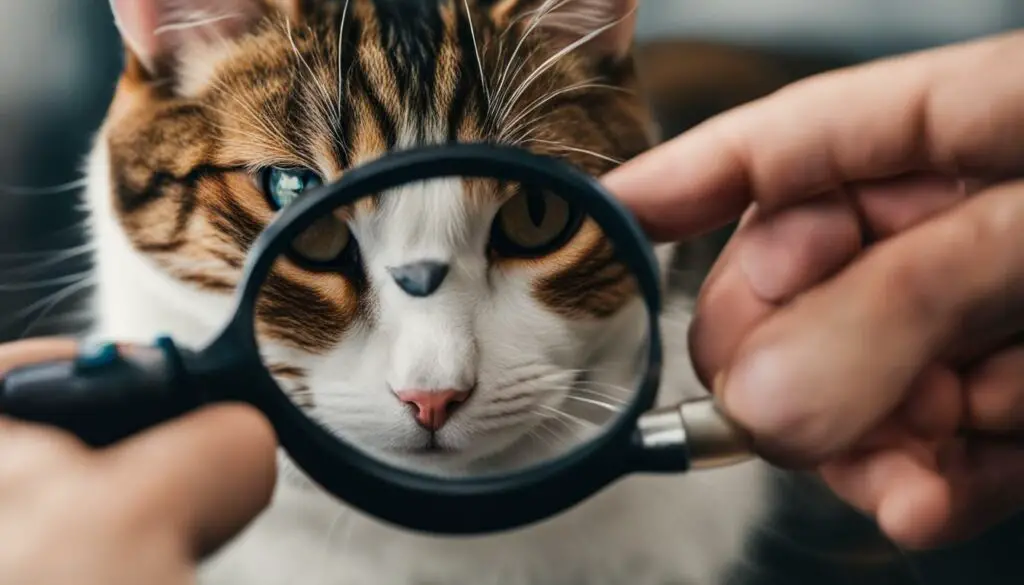
Conclusion
Early detection and treatment are paramount when it comes to cat ear problems. By seeking veterinary consultation at the first signs of trouble and following through with appropriate treatment, you can ensure the well-being of your cat and prevent further complications. Remember to monitor your cat’s ear health regularly and seek follow-up care to maintain good ear health in the long term.
Regular Monitoring and Follow-up Care
After receiving initial diagnosis and treatment for your cat’s ear problems, it is crucial to prioritize regular monitoring and follow-up care. This ongoing vigilance ensures that any recurring issues or new developments are detected early and promptly addressed, maintaining optimal ear health for your feline companion.
During follow-up appointments with your veterinarian, they will thoroughly examine your cat’s ears, checking for any signs of infection, inflammation, or other abnormalities. They may use specialized tools, such as an otoscope, to get a closer look inside the ear canal. Regular monitoring allows for the identification of potential problems before they worsen, resulting in more effective and timely treatment.
In addition to veterinary visits, you play a vital role in monitoring your cat’s ear health at home. Keep an eye out for any changes in behavior or the appearance of the ears. Observe if your cat is scratching excessively, shaking their head frequently, or displaying any signs of discomfort. Any unusual discharge, redness, or swelling should also be noted. By staying vigilant and documenting any changes, you can provide valuable information to your veterinarian during follow-up appointments.
Maintaining a Healthy Ear Care Routine
Alongside regular monitoring, follow-up care involves maintaining a consistent ear care routine at home. Your veterinarian may recommend specific cleaning solutions or products suitable for your cat’s needs. It’s important to follow their guidance carefully to ensure proper and safe ear cleaning.
During the cleaning process, be gentle and patient with your cat. Use a soft cloth or cotton ball to clean the visible parts of the ear, avoiding any insertion into the ear canal. Remember, the ear canal is delicate, and improper cleaning techniques may cause further irritation or injury.
In some cases, follow-up care may also involve administering prescribed medications or treatments. It is crucial to follow your veterinarian’s instructions precisely, including dosage and duration, to achieve the best possible outcomes for your cat’s ear health.
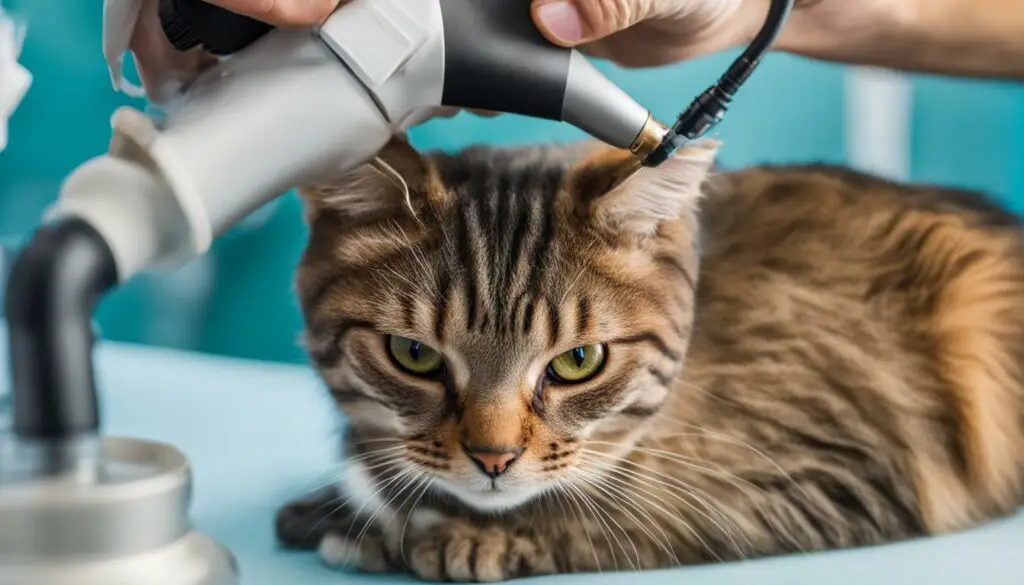
| Benefits of Regular Monitoring and Follow-up Care |
|---|
| Early detection of recurrent or new ear problems |
| Prompt intervention to prevent complications |
| Improved effectiveness of treatment |
| Maintaining optimal ear health for your cat |
| Enhanced overall well-being and comfort |
In conclusion, regular monitoring and follow-up care are vital aspects of maintaining your cat’s ear health. By working closely with your veterinarian and implementing a consistent ear care routine, you can ensure that any issues are addressed promptly, leading to improved overall well-being and a happy, comfortable life for your feline companion.
Tips for Cat Ear Care at Home
Proper care and maintenance of your cat’s ears at home play a crucial role in ensuring their overall ear health. By following these simple tips, you can help prevent common ear problems and keep your feline friend comfortable and happy:
- Clean your cat’s ears regularly: Use a veterinarian-recommended ear cleaning solution and gently wipe the outer ear with a cotton ball or pad. Avoid inserting anything into the ear canal, as it can cause injury.
- Keep the ears dry: Moisture can contribute to the growth of bacteria or fungi, leading to ear infections. Dry your cat’s ears carefully after bathing or exposure to water, and avoid excessive moisture in the ears.
- Avoid exposure to potential allergens: Identify and minimize exposure to common allergens such as certain foods, pollen, and dust mites, as they can trigger ear problems in cats with allergies. Consult with a veterinarian for guidance on managing your cat’s allergies.
- Monitor your cat’s behavior and ear health: Regularly observe your cat for any signs of ear issues, such as excessive scratching, head shaking, or redness/swelling of the ears. If you notice any abnormalities, seek veterinary advice promptly.
Remember, while these home care measures are important, they should supplement, not replace, professional veterinary care. Regular visits to your veterinarian for check-ups and professional ear examinations are essential for maintaining your cat’s ear health.
| Tips for Cat Ear Care at Home | Summary |
|---|---|
| Clean your cat’s ears regularly | Regular cleaning with a veterinarian-recommended solution |
| Keep the ears dry | Dry the ears carefully after bathing or exposure to water |
| Avoid exposure to potential allergens | Identify and minimize exposure to common allergens |
| Monitor your cat’s behavior and ear health | Regularly observe for signs of ear issues and seek veterinary advice if needed |
By implementing these tips into your cat’s routine, you can contribute to their overall ear health and well-being. Remember, if you have any concerns or questions about cat ear care, it is always best to consult with a veterinarian.
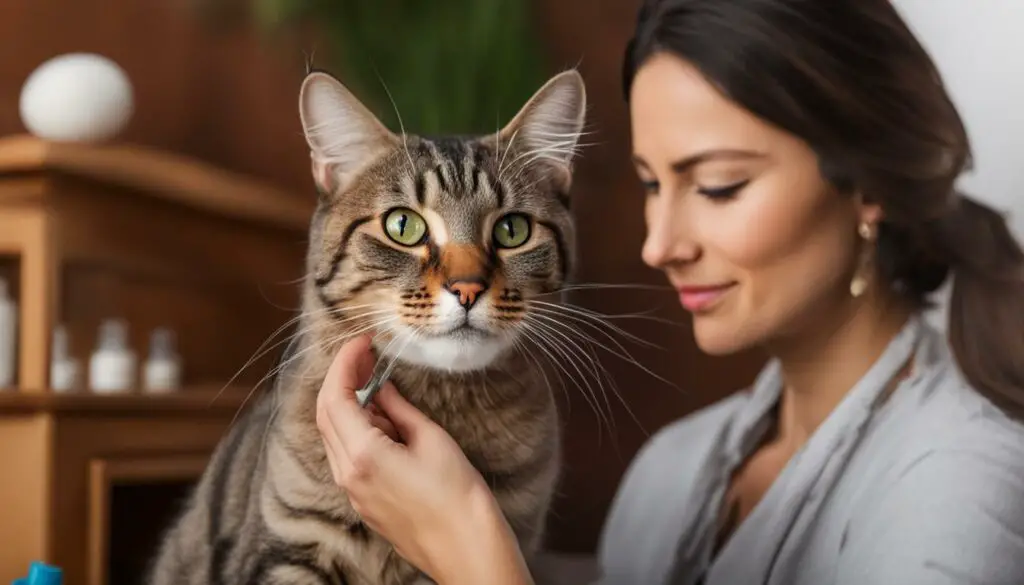
Conclusion
In conclusion, taking care of your cat’s ears is vital for their overall health and well-being. By being aware of the symptoms of ear problems and seeking veterinary consultation, you can ensure early detection and appropriate treatment. Whether it’s ear mites, outer ear canal infections, ear polyps, dermatophytosis, or allergies, addressing these issues promptly is crucial.
Regular monitoring and follow-up care with your veterinarian are essential to prevent complications and maintain good ear health in your feline companion. Additionally, implementing proper ear cleaning techniques and practicing good hygiene at home can contribute to preventing severe infections.
Remember, your cat’s ears are sensitive and require special attention. By providing the care they need, you can ensure that your furry friend enjoys a comfortable and happy life, free from ear problems. Consult with your veterinarian for specific recommendations based on your cat’s individual needs, and together, you can keep their ears healthy and infection-free.
FAQ
What are the symptoms of ear issues in cats?
Common symptoms of ear issues in cats include excessive scratching, sensitivity to touch, head tilting, frequent head shaking, redness or swelling of the outer ear, foul odor, ear discharge (black, brown, or yellow in color), excessive brown ear wax, hearing loss, ear bleeding, and behavioral changes.
What are some common cat ear problems?
Common cat ear problems include ear mites, outer ear canal infections, ear polyps, dermatophytosis (ringworm), and allergies.
What are ear mites in cats?
Ear mites are tiny parasites that commonly affect young kittens and cats that spend time outdoors. They can cause symptoms such as head shaking, scratching around the ears, head, and neck, and a dry dark brown to black ear discharge resembling coffee grounds.
What are outer ear canal infections in cats?
Outer ear canal infections are the most common ear problems in cats and can be caused by bacterial or fungal infections. They can cause symptoms such as redness or swelling of the ears, any type of ear discharge, foul odor, etc.
What are ear polyps in cats?
Ear polyps are inflammatory masses that can develop in the ears of cats. They are usually less concerning than tumors or cancer and are often associated with recurrent or unresolved ear infections.
What is dermatophytosis (ringworm) in cats?
Dermatophytosis, commonly known as ringworm, is a fungal infection that typically affects the skin and hairs in cats. While it does not commonly affect the ear canal, it can occur on the ear flaps, especially in young kittens.
Can allergies cause ear problems in cats?
Yes, allergies can lead to ear problems in cats, causing itchiness and inflammation in the ears. Common allergens include food allergens and environmental allergens such as pollen and dust mites.
When should I seek veterinary consultation for cat ear problems?
If your cat shows any symptoms of ear problems or experiences recurrent ear issues, it is important to seek veterinary consultation. A veterinarian can accurately diagnose the underlying cause of the problems, provide appropriate treatment, and help improve your cat’s ear health.
How should I clean my cat’s ears?
Proper ear cleaning is essential for maintaining good ear health in cats. It is important to use appropriate cleaning solutions and techniques recommended by a veterinarian to avoid causing further damage to the ears.
How can I prevent cat ear infections?
Preventing cat ear infections involves regular ear cleaning, minimizing exposure to potential allergens, and addressing any underlying health issues that may predispose cats to ear problems.
What are the treatment options for cat ear infections?
Treatment for cat ear infections depends on the underlying cause, whether it is bacterial, fungal, or parasitic. A veterinarian may prescribe appropriate ear treatments, including medications or antiparasitic washes, to resolve the infection and alleviate the symptoms.
Why is early detection and treatment important for cat ear problems?
Early detection and treatment of cat ear problems are crucial for preventing complications and ensuring the well-being of the cat. Prompt veterinary consultation and appropriate treatment can help resolve the issues and improve the overall ear health of your feline companion.
How often should I monitor my cat’s ear health?
After the initial diagnosis and treatment, it is important to monitor your cat’s ear health and schedule regular follow-up care with the veterinarian. This helps in detecting any recurrence or new issues and ensures that your cat’s ears stay healthy and free from infections.
Are there any tips for cat ear care at home?
Along with veterinary care, there are some simple measures you can take to maintain your cat’s ear health at home. These include regular ear cleaning, keeping the ears dry, and avoiding exposure to potential allergens. However, it is important to consult with a veterinarian for specific recommendations based on your cat’s individual needs.

